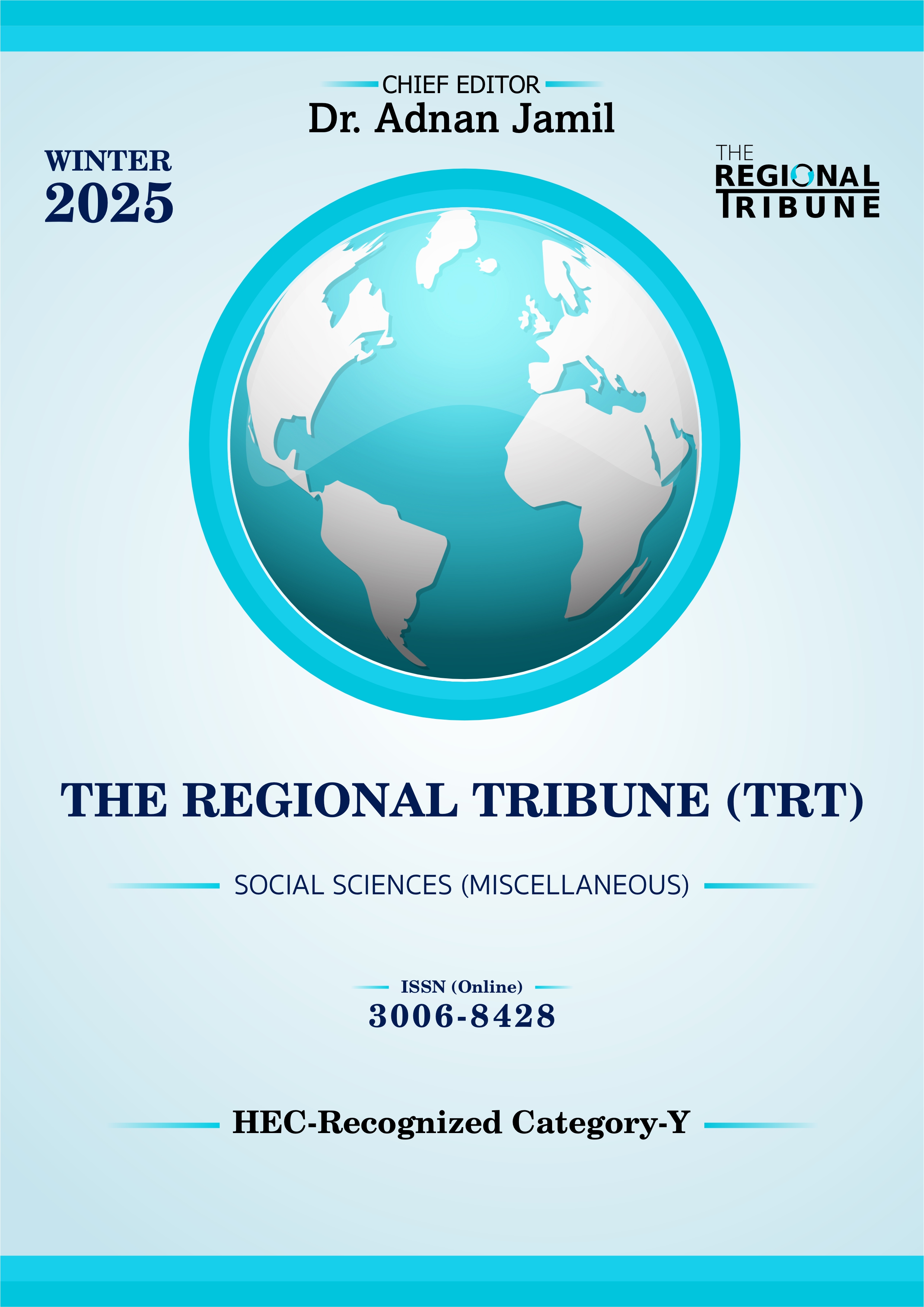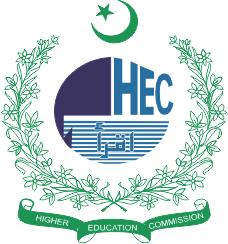Spatial Analysis of COVID-19 with Associated Multimorbidity and Environmental Dynamics using Google Earth Engine in Balochistan, Pakistan
DOI:
https://doi.org/10.63062/trt/WR25.078Keywords:
COVID-19, Geographic Information System (GIS), Remote Sensing (RS), Google Earth Engine, BalochistanAbstract
COVID-19 has caused a death toll of over 7 million. COVID-19 has proven to have hostile effects on human health, industrial production, the economy, social functioning, and international relations. The pandemic of the SARS-CoV-2 virus is also causing mismanagement of other diseases such as respiratory, cardiovascular, arboviral, metabolic, neural diseases, and hypertension. These alarming situations of multiple co-infections are the cause of serious public health concerns globally. The study aims to explore the effect of the COVID-19 pandemic on routine and emergency care for multimorbidity in Balochistan. This involves both primary and secondary data sources. Primary data was collected through a field survey, while secondary data was obtained from the World Health Organization, the government of Balochistan, and remote sensing. Density analysis was carried out to generate the density maps of COVID-19 cases with associated multimorbidity across all the districts of Balochistan in a geographic information system environment using ArcMap 10.8.2. Remote sensing data acquired from Sentinel 5P through Google Earth Engine was used to analyze environmental parameters such as nitrogen dioxide, sulfur dioxide, carbon monoxide, ozone, and land surface temperature during the COVID-19 years. The findings of this study indicate that multimorbidity was a risk factor for COVID-19 severity and that the risk increased with the morbidity burden. This study also shows that urban populations are more vulnerable to the risk of multimorbidity with COVID-19 than those in rural areas. The results strongly recommend the implementation of modified tactics for patients with multimorbidity and a lack of facilities.
References
Abad-Díez, J. M., Calderón-Larrañaga, A., Poncel-Falcó, A., Poblador-Plou, B., Calderón-Meza, J. M., Sicras-Mainar, A., Clerencia-Sierra, M., & Prados-Torres, A. (2014). Age and gender differences in the prevalence and patterns of multimorbidity in the older population. BMC Geriatrics, 14, 75. https://doi.org/10.1186/1471-2318-14-75
Abbas, S., Ali, G., Qamer, F. M., & Irteza, S. M. (2022). Associations of air pollution concentrations and energy production dynamics in Pakistan during lockdown. Environmental Science and Pollution Research, 29(23), 35036–35047. https://doi.org/10.1007/s11356-021-18071-4
Agrawal, U., Azcoaga-Lorenzo, A., Fagbamigbe, A. F., Vasileiou, E., Henery, P., Simpson, C. R., Stock, S. J., Shah, S. A., Robertson, C., Woolhouse, M., Ritchie, L. D., Shiekh, A., Harrison, E. M., Docherty, A. B., & McCowan, C. (2022). Association between multimorbidity and mortality in a cohort of patients admitted to hospital with COVID-19 in Scotland. Journal of the Royal Society of Medicine, 115(1), 22–30. https://doi.org/10.1177/01410768211051715
Ali, G., Abbas, S., Qamer, F. M., Wong, M. S., Rasul, G., Irteza, S. M., & Shahzad, N. (2021). Environmental impacts of shifts in energy, emissions, and urban heat island during the COVID-19 lockdown across Pakistan. Journal of Cleaner Production, 291, 125806. https://doi.org/10.1016/j.jclepro.2021.125806
Carmona-Pírez, J., Gimeno-Miguel, A., Bliek-Bueno, K., Poblador-Plou, B., Díez-Manglano, J., Ioakeim-Skoufa, I., González-Rubio, F., Poncel-Falcó, A., Prados-Torres, A., & Gimeno-Feliu, L. A. (2022). Identifying multimorbidity profiles associated with COVID-19 severity in chronic patients using network analysis in the PRECOVID Study. Scientific Reports, 12(1), 2831. https://doi.org/10.1038/s41598-022-06838-9
Castro-de-Araujo, L. F. S., da Silva Rodrigues, E., Machado, D. B., Henriques, C. M. P., Verotti, M. P., Gonçalves, A. Q., Duarte-Salles, T., Kanaan, R. A., Barreto, M. L., Lewis, G., & Barbosa, J. R. (2022). Multimorbidity worsened anxiety and depression symptoms during the COVID-19 pandemic in Brazil. Journal of Affective Disorders, 314, 86–93. https://doi.org/10.1016/j.jad.2022.07.005
Chodick, G. (2025). Long-term infectious sequelae after SARS-CoV-2 infection should be considered in mild cases too. The Lancet Infectious Diseases.
Cornell, J. E., Pugh, J. A., Williams, J. W., Jr., Kazis, L., Lee, A. F. S., Parchman, M. L., Zeber, J. E., Pederson, T., Montgomery, K. A., & Noël, P. H. (2008). Multimorbidity clusters: Clustering binary data from a large administrative medical database. Applied Multivariate Research, 12(3), 163–182. https://doi.org/10.22329/amr.v12i3.658
Divo, M. J., Martinez, C. H., & Mannino, D. M. (2014). Ageing and the epidemiology of multimorbidity. European Respiratory Journal, 44(4), 1055-1068.
Hassan, F., Chaudhry, M. U., Yasir, M., Asghar, M. N., & Sarkodie, S. A. (2021). Monitoring the impact of COVID-19 lockdown on the production of nitrogen dioxide (NO₂) pollutants using satellite imagery: A case study of South Asia. Sustainability, 13(13), 7184. https://doi.org/10.3390/su13137184
Javed, B., Sarwer, A., Soto, E. B., & Mashwani, Z. U. R. (2020). Is Pakistan on track to have COVID-19 transmission and mortality rates similar to those of Italy, Iran or the USA? Drugs & Therapy Perspectives, 36(7), 293–297. https://doi.org/10.1007/s40267-020-00726-w
Katper, N. K., Tunio, M. N., Hussain, N., Junejo, A., & Gilal, F. G. (2020). COVID-19 crises: Global economic shocks vs Pakistan economic shocks. Advances in Science, Technology and Engineering Systems Journal, 5(4), 645–654. https://doi.org/10.25046/aj050477
Khan, M., Khan, H., Khan, S., & Nawaz, M. (2020). Epidemiological and clinical characteristics of coronavirus disease (COVID-19) cases at a screening clinic during the early outbreak period: A single-centre study. Journal of Medical Microbiology, 69(8), 1114–1123. https://doi.org/10.1099/jmm.0.001231
Lai, F. T. T., Huang, L., Chui, C. S. L., Wan, E. Y. F., Li, X., Wong, C. K. H., Chan, E. W. W., Ma, T., Lum, D. H., Leung, J. C. N., & Wong, I. C. K. (2022). Multimorbidity and adverse events of special interest associated with COVID-19 vaccines in Hong Kong. Nature Communications, 13(1), Article 411. https://doi.org/10.1038/s41467-022-28068-3
Nanda, D., Mishra, D. R., & Swain, D. (2021). COVID-19 lockdowns induced land surface temperature variability in mega urban agglomerations in India. Environmental Science: Processes & Impacts, 23(1), 73–84. https://doi.org/10.1039/D0EM00358A
Noël, P. H., Parchman, M. L., Williams, J. W., Jr., Cornell, J. E., Shuko, L., Zeber, J. E., Kazis, L. E., Lee, A. F. S., & Pugh, J. A. (2007). The challenges of multimorbidity from the patient perspective. Journal of General Internal Medicine, 22(Suppl 3), 419–424. https://doi.org/10.1007/s11606-007-0308-z
Nogueira, P. J., de Araújo Nobre, M., Elias, C., Feteira-Santos, R., Martinho, A. C.-V., Camarinha, C., Bacelar-Nicolau, L., Costa, A. S., Furtado, C., Morais, L., Rachadell, J., Pinto, M. P., Pinto, F., & Vaz Carneiro, A. (2022). Multimorbidity profile of COVID-19 deaths in Portugal during 2020. Journal of Clinical Medicine, 11(7), 1898. https://doi.org/10.3390/jcm11071898
Noreen, N., Dil, S., Niazi, S. U. K., Naveed, I., Khan, N. U., Khan, F. K., Tabbasum, S., & Kumar, D. (2020). Coronavirus disease (COVID-19) Pandemic and Pakistan; Limitations and Gaps. Global Biosecurity, 1(3). https://doi.org/10.31646/gbio.63
Pakistan Bureau of Statistics (PBS). (2023). Balochistan Province 7th Population and Housing Census 2023. https://www.pbs.gov.pk
Pal, S., & Ziaul, S. (2017). Detection of land use and land cover change and land surface temperature in English Bazar urban centre. The Egyptian Journal of Remote Sensing and Space Sciences, 20(1), 125–145. https://doi.org/10.1016/j.ejrs.2016.11.003
Provincial Disaster Management Authority (PDMA) Balochistan. (2025). Balochistan profile. https://www.pdma.gob.pk/about-us/balochistan-profile
Richardson, S., Hirsch, J. S., Narasimhan, M., Crawford, J. M., McGinn, T., Davidson, K. W., & Northwell COVID-19 Research Consortium. (2020). Presenting characteristics, comorbidities, and outcomes among 5700 patients hospitalized with COVID-19 in the New York City area. JAMA, 323(20), 2052–2059. https://doi.org/10.1001/jama.2020.6775
Rozenstein, O., Qin, Z., Derimian, Y., & Karnieli, A. (2014). Derivation of land surface temperature for Landsat-8 TIRS using a split window algorithm. Sensors (Switzerland), 14(4), 5768–5780. https://doi.org/10.3390/s140405768
Santesmasses, D., Castro, J. P., Zenin, A. A., Shindyapina, A. V., Gerashchenko, M. V., Zhang, B., Kerepesi, C., Yim, S. H., Fedichev, P. O., & Gladyshev, V. N. (2020). COVID-19 is an emergent disease of aging. Aging Cell, 19(10), e13230. https://doi.org/10.1111/acel.13230
Ullah, N., Rehman, T., Mengal, S., Amanullah, Shafi Ullah, Khan, M. M., & Kakar, A. U. (2025). Impacts of social media on the academic performance of university students in Pakistan. The Critical Review of Social Sciences Studies, 3(1), 3426–3437. https://doi.org/10.59075/22essj49
Ullah, N., Tariq, A., Qasim, S., Panezai, S., Uddin, M. G., Abdullah-Al-Wadud, M., & Ullah, S. (2024). Geospatial analysis and AHP for flood risk mapping in Quetta, Pakistan: a tool for disaster management and mitigation. Applied Water Science, 14(11). https://doi.org/10.1007/s13201-024-02293-1
Ullah, S., Ullah, N., Tariq, A., Panezai, S., Tahir, P., & Khan, B. (2025). Spatial assessment of the availability of healthcare facilities at district level in Balochistan using GIS: Identifying gaps and way forward. Spatial Information Research, 33(2), 8. https://doi.org/10.1007/s41324-025-00602-7
Zanke, A. A., Thenge, R. R., & Adhao, V. S. (2020). COVID-19: A pandemic declared by World Health Organization. IP International Journal of Comprehensive and Advanced Pharmacology, 5(2), 49–57. https://doi.org/10.18231/j.ijcaap.2020.012
Downloads
Published
Issue
Section
License
Copyright (c) 2025 Niamat Ullah, Dr. Shafi Ullah, Sabiha Mengal, Dr. Shanila Azhar, Dr. Said Qasim

This work is licensed under a Creative Commons Attribution-NonCommercial 4.0 International License.



